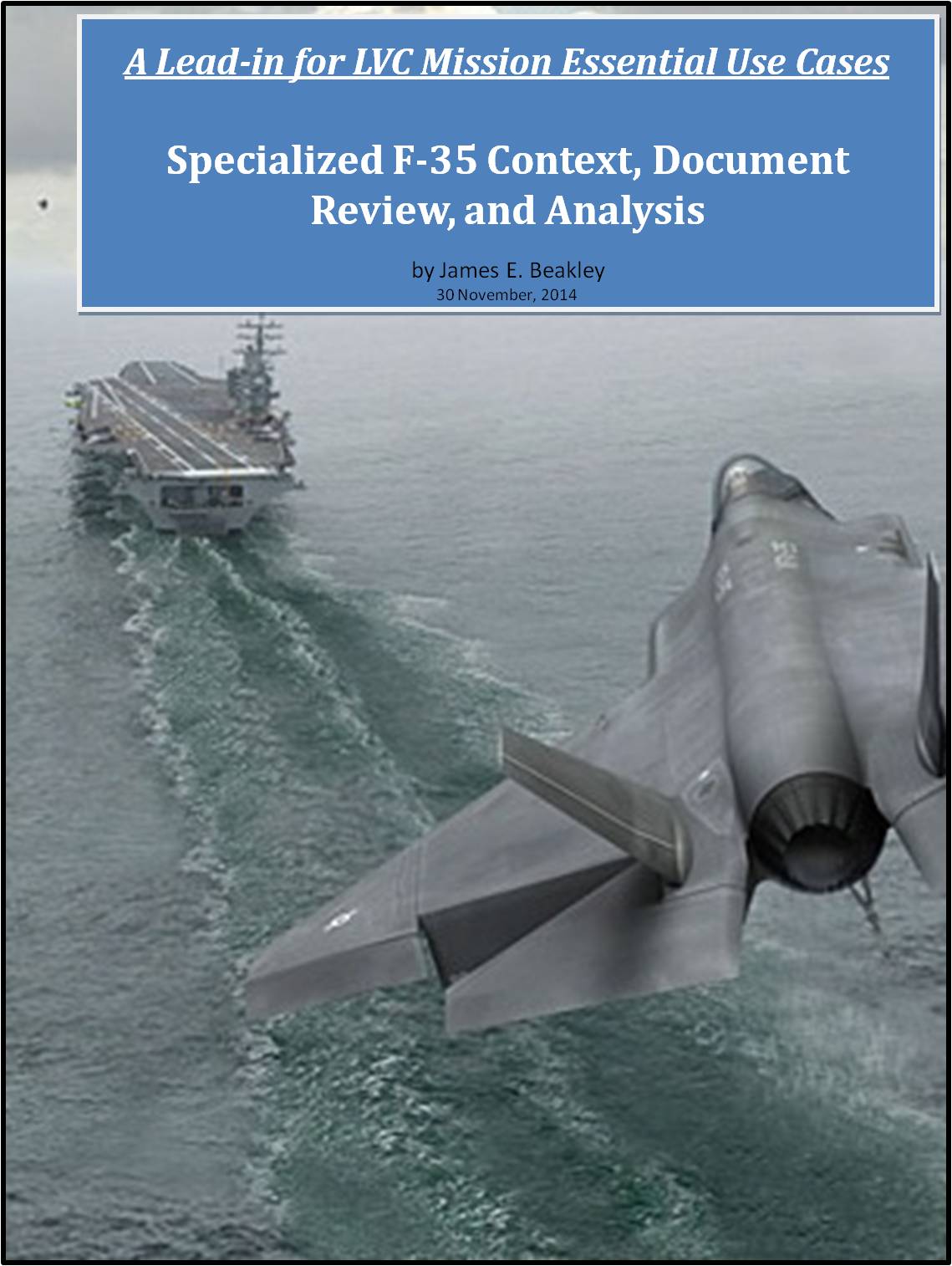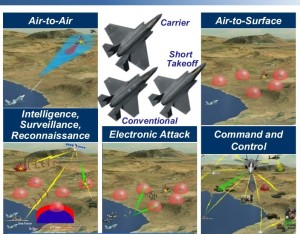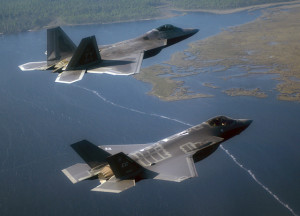Blown Slick Series #8 (Part 3/3)
Continuing from Part 1 & 2 – the “something new”
Airpower Application and 5th Generation Aircraft
The term “fifth-generation aircraft” is part of the problem facing the future of airpower. The usage of the term might suggest a linear relationship to preceding aircraft, so that one could argue that F-18s and F-16s can be upgraded and become 4.8-generation aircraft, closely replicating 5th generation capability. For the proponents of F-22 and F-35, they believe this is simply not the case. For them, the fifth-generation aircraft are a benchmark for a new approach to air power, and leads to the thought by some that 5th generation aircraft will result in “Re-norming” of Air Operations. This will be the subject of a separate post, but for now from Re-Norming Air Operations:
(Recall that a page on Fifth Generation Fighters is available as a reference.)
Classic aircraft development simply adds systems to the aircraft to provide new capabilities. The pilot has to then manage each added system. For example, the F-35 has five major combat systems which interact with each other. Functional capabilities emerge from the interaction of the systems handled by the machine, and are not simply correlated with a single system. Jamming can be done by several systems aboard the aircraft. The machine determines which one is used through interaction among all of the systems. The entire system rests on a common architecture with broadband capabilities.
If air power leaders simply mimic the operations of older aircraft with the fifth generation aircraft, the promise of the new air operations will not be realized. The United States and its allies would simply be mimicking the mistake of the French when facing the Germans in World War II, where they had superior tanks but outmoded tactics and command structures.
The new aircraft simply do not function like the old.
The fifth-generation aircraft are at the heart of a potential new air combat system enterprise. The F-22s have been the harbinger, but for full participation, the F-22 needs to be modernized with some of the air combat systems present on the F-35.
The F-35 is a flying combat system able to operate across the spectrum of warfare. It is the first plane which can manage 360-degree space, and has the combat system to manage that space. Deployed as a force, it enables distributed air operations, an approach crucial to the survival of our pilots in the many challenges that lie ahead.
Distributed operations are the cultural shift associated with the fifth-generation aircraft, along with investments in new weapons, remotely piloted aircraft, and the crafting of simultaneous rather than sequential operations.
Unfortunately, the debate about fifth-generation aircraft continues as if these are simply aircraft, not nodes that are driving significant cultural changes in operational capabilities. And they are essential tools in executing difficult missions such as missile defense as well.
A year ago I conducted an investigation which has impacted my thinking in regard to elements discussed above and the conclusions of the report have become part of the rationale for this series. Entitled A Lead-in for LVC (Live, Virtual, Constructive) Mission Essential Use Cases; Specialized F-35 Context, Document Review,  and Analysis, the investigation was driven by a stated Navy problem related to available range air and ground space being insufficient for replicating the growing threat environment – such as Anti Access/Area Denial (A2AD) – for airwing training with the stated need to therefore incorporate LVC simulation.
and Analysis, the investigation was driven by a stated Navy problem related to available range air and ground space being insufficient for replicating the growing threat environment – such as Anti Access/Area Denial (A2AD) – for airwing training with the stated need to therefore incorporate LVC simulation.
The effort was based on the premise that to develop a meaningful approach for use of LVC simulation capability in furtherance of F-35 technical and tactical concepts and implementation, the approach needed to be based on sound knowledge of overall airpower application, not just specialized mission scenarios.
The essential elements of understanding for support of this hypothesis were presented through use of four operational threads: Thread One discussed power projection, and strike warfare as they support airpower theory and operations. As the F-35 is intended to replace multiple tactical aircraft they describe the basic roles and missions that the multi-role Joint Strike Fighter must be able to execute. Thread Two related to the current and persistent operational problems of irregular warfare, inclusive of CAS, (with the Syrian situation along with ISIS as example). Thread Three explored joint operational access in response to a serious peer power anti-access/area denial threat capability (with China as example but with note that Iran and North Korea pose similar problems). Thread Four focused on the concepts behind fifth generation multi-role fighter design and in particular the aspect of the F-35 capabilities to fuse on-board sensor information from multiple systems and generate an AWACs type C4ISR -D (decision) integrated battlespace situational awareness across platforms.
Indeed, that integration capability, along with the fifth generation property of stealth is the basis being offered as the potential capability to “re-norm” airpower as noted above, and as such, is a major element of Blown Slick interest. Other elements of this report such as the emerging threats of irregular warfare and A2AD will be the subject for future Blown Slick pieces with certain aspects running throughout many of the offerings.
In closing this three part perspective on airpower, let me suggest a thought experiment.
Draw a straight line beginning with WWI and the the Sopwith Camel. Continue through WWII with your choice of best fighter (Spits, Zero, Mustang, Corsair), on into the Korean War and the MiG-15 and F-86, then to Vietnam and the MiG-21 and F-4, and to the current F-15/16/18 group. If you think it makes sense add the F-22 Raptor, all together depicting a linear evolution of fighter a/c.
Good or bad, expensive and late, the F-35 Lightning II Joint Strike Fighter will not be found on that line. Of course it must live up to its potential, but does the F-35 not give a different perspective on future airpower? In truth one must look critically at the value added aspect of the F-35’s information fusion capability and at least question how important is the F-16 vs F-35 knife fight (Red Baron style) really in the larger scheme of things? Is the picture here our future?
 I for one, remain skeptical of be-all, do-all tactical aircraft, but for me, there’s a lot still to be seen.
I for one, remain skeptical of be-all, do-all tactical aircraft, but for me, there’s a lot still to be seen.
With this post, we have now touched upon to some degree each of the proposed boundary conditions for Blown Slick and now move on to more specifics… like more detail on the 35, the basis for further analysis, and the criticism issues beyond cost and schedule.





